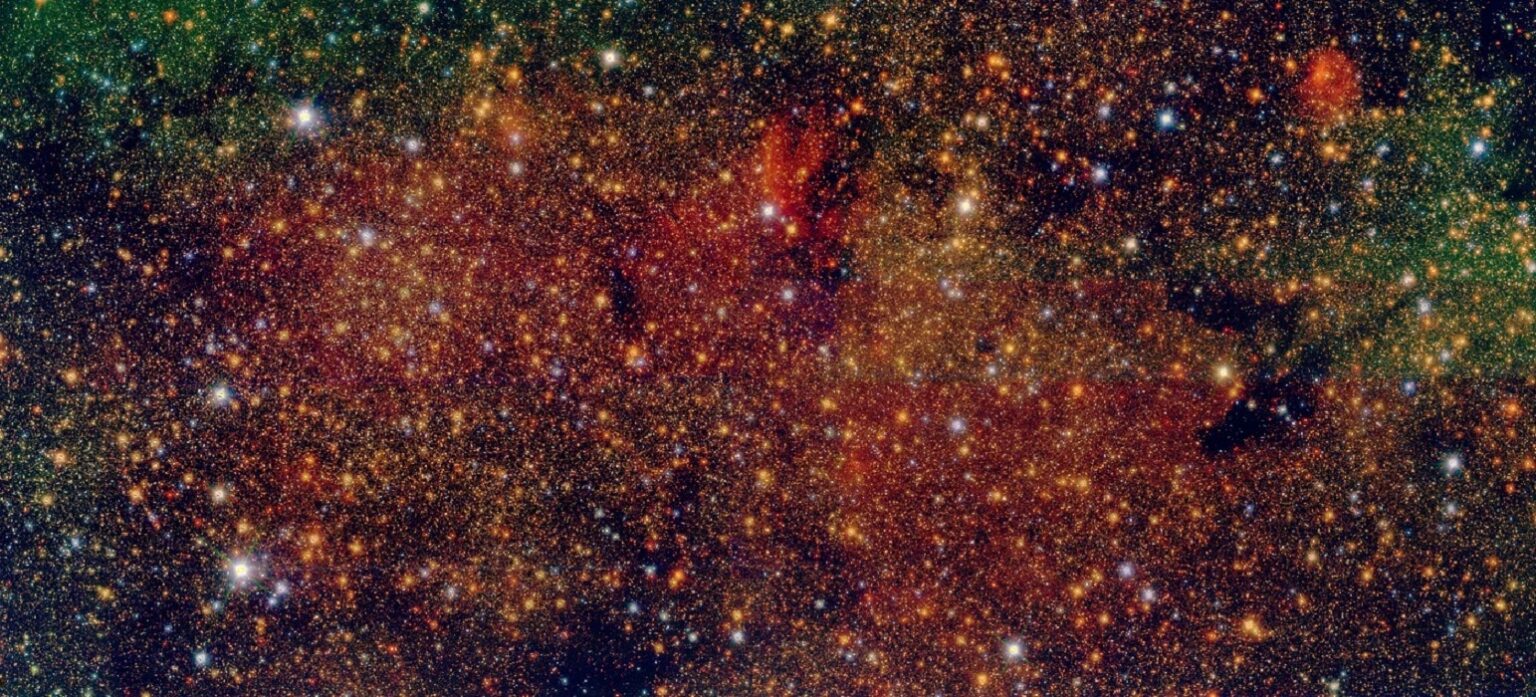Using detailed observations, astronomers managed to see the “star factory” in the central part of the Milky Way in detail for the first time. The name was given for the active formation of numerous young stars in the Sagittarius B1 region. Observations suggest that star formation first began in the center of the Galaxy and then moved outward.

The photo of the central part was obtained as part of the GALACTICNUCLEUS survey thanks to the HAWK-I infrared camera on the European Southern Observatory’s VLT telescope. To make such a panoramic picture, astronomers had to take almost 150 pictures of the central region of the Milky Way in J, H and Ks infrared bands, covering a total area of 64 thousand square light years around the Galactic Center.
New discoveries in the galactic center
Astronomers have found that most of the stars in this region did not originate in tight-knit massive clusters, but rather in a loose stellar association that has dispersed over the past million years. The central region of the Milky Way is less than 1% of the galactic disk. More than 10% of all newborn stars in the Galaxy in the last 100 million years were formed there. Therefore, it is considered an ideal laboratory for understanding the formation of stars in extreme conditions.
Astronomers analyzed the star formation history of Sagittarius B1, the central region of the Galaxy associated with strong infrared emission. They immediately noticed that the region was different from other regions — it contained significantly more young stars that ionized the surrounding gas. The existence of ionized hydrogen gas and the presence of X-rays characteristic of some types of young, very massive stars indicate that star formation occurred within the last 10 million years.
Astronomers also found that Sagittarius B1 has undergone several phases of star formation. There are an older population of stars that formed between 2 and 7 billion years ago, and a large population of much younger stars that are only 10 million years old or less.
Problems during observation
Learning about highly productive star formation in the central regions of our Galaxy is not easy, because these regions are difficult to observe for they are hidden from us by a large amount of dust. But this problem is solved with the help of infrared, millimeter waves or radio observations. These wavelengths radiation does pass through dust revealing a view of the Galactic Center.
When the dust problem is solved, another one occurs: it is difficult to distinguish one star from another in the Galactic Center because of their dense concentration. The exception is a few bright giant stars that stand out from the rest because they are easy to distinguish from others. Given this information, astronomers were able to reconstruct the brightness of each star, compensating for dimming due to dust. It turned out that all the stars in Sagittarius B1 are approximately the same distance from Earth.
Astronomers want to continue their observations with the VLT’s KMOS instrument, a high-precision spectrograph. Spectral observations will allow them to identify some very young stars directly by the appearance of their spectra. This would be important for cross-validation of published results.
Previously, we reported on mysterious structures found in the center of the Milky Way.
Based on the materials of Techexplorist

